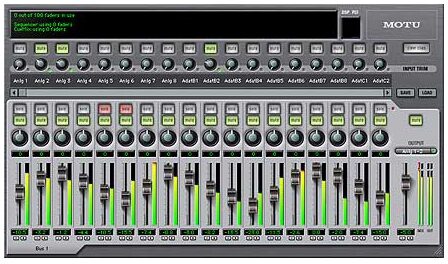

These interfaces appear to be similar internally thus, the 828es, like the 1248, have a massively powerful digital mixer with up to 48 inputs and extensive mixing, routing, and signal processing capabilities.

So, unlike earlier 828s, which came with a control-panel tool called CueMix, the 828es' internal DSP is managed via a Web browser, just like other MOTU AVB interfaces like 1248, 16A, 8M, etc.

The 828es is not just a descendant of the 828, but it is also a member of MOTU's AVB line, which means it can be used in an IEEE 802.1 AVB/TSN networked audio system. In reality, the only socket that the 828es has acquired over the 828x is an RJ45, although this is a little hint that things are different under the hood. (Unfortunately, only one cable is provided, and it is not a Thunderbolt cable.)
#Motu 828 mkii firewire audio interface code#
The 828es, like the 828x, has a word clock and linear time code in and out and can connect to a host computer by Thunderbolt or USB. There are also two pairs of optical connectors that can handle up to 16 channels of ADAT-format digital I/O, with the first pair additionally supporting TOSlink stereo and dedicated coaxial S/PDIF I/O and MIDI in and out. Unlike most microphone inputs, both mic inputs feature dedicated insert points on quarter-inch jacks, giving access to hardware processors to be patched into a recording chain. It includes two 'combi' mic/line sockets and eight line inputs on quarter-inch jacks for analog I/O, and its stereo XLR main outputs are supplemented by eight extra quarter-inch sockets and two headphone jacks. This newest and greatest 828, still housed in a black 1U rack mounting box, caters to the same market segment as past holders of that prestigious moniker, but behind the hood, it's bang up to date.


 0 kommentar(er)
0 kommentar(er)
